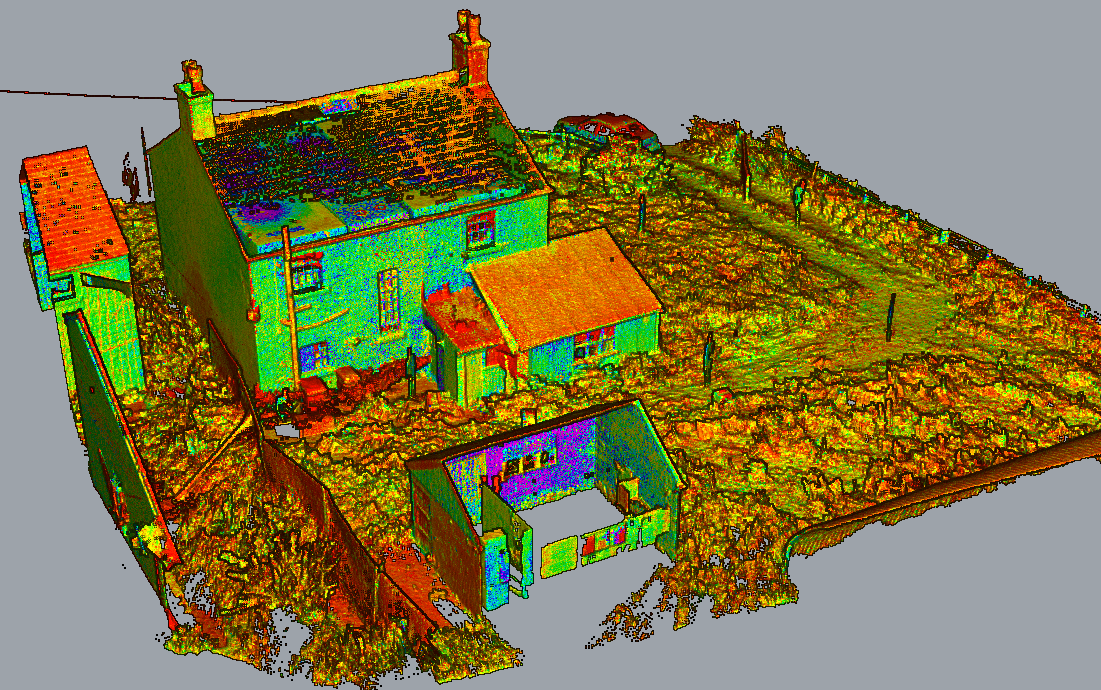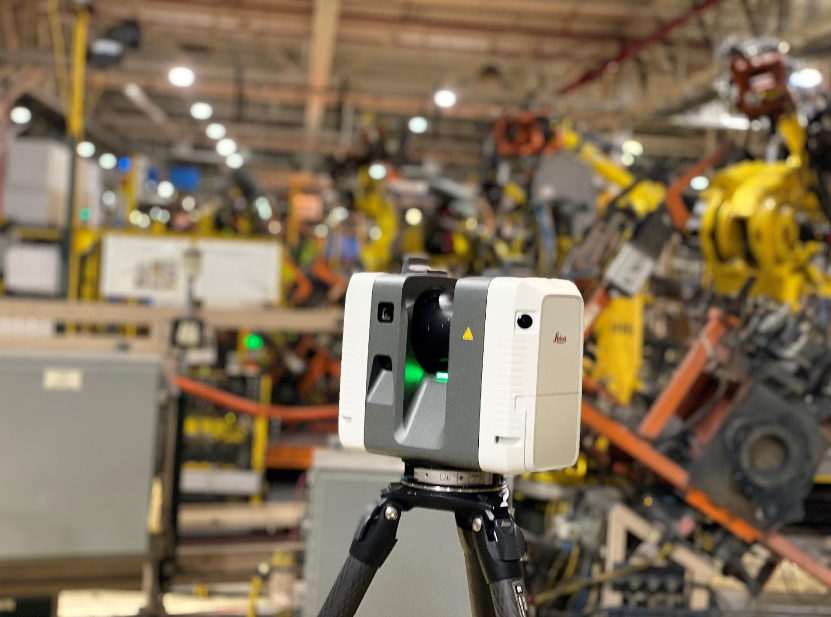Starter Guide to 3D Scanning Workflows
Wiki Article
Just How 3D Laser Scanning Reinvents Architectural Design and Construction Projects
3D laser scanning is changing the landscape of architectural style and construction. This modern technology provides unrivaled precision in capturing existing atmospheres, which assists in better job preparation and implementation. It decreases mistakes while improving effectiveness in different phases of growth. The effects for partnership amongst architects, engineers, and various other stakeholders are substantial. These developments unlock to new style possibilities and cutting-edge solutions. What exists in advance for this progressing innovation?The Principles of 3D Laser Scanning Technology
Although 3D laser scanning modern technology might seem facility, its core concepts are transformative and simple for building layout. This modern technology utilizes laser beam of lights to record precise measurements of physical frameworks, creating a detailed point cloud that represents the scanned environment. A laser scanner sends out rapid pulses of light, gauging the moment it considers the light to return, which allows for the calculation of distances with remarkable accuracy.The resulting factor cloud can be exchanged a 3D version, offering engineers with very useful aesthetic information. This design enables professionals to evaluate and manipulate style aspects within their tasks, enabling for innovative remedies and improved visualization. By utilizing 3D laser scanning, architects can better comprehend the existing problems of a site, making sure that new designs harmonize with their environments. This integration of modern technology right into architectural design marks a significant advancement, promoting imagination and precision in the area.

Enhancing Accuracy and Effectiveness in Architectural Projects
As building projects increasingly demand precision and rate, 3D laser scanning becomes a pivotal tool in improving both precision and performance. This innovation captures millions of information points in a brief timeframe, creating specific and thorough 3D designs of existing frameworks. The capacity to get accurate dimensions minimizes the danger of mistakes throughout the layout phase, enabling designers to imagine their jobs with unequaled clarity.The fast data collection procedure lessens the time invested on-site, making it possible for teams to focus on analysis and design improvements. With real-time information availability, changes can be made swiftly, promoting a more streamlined operations. The integration of 3D laser scanning right into architectural techniques not just boosts dimension precision yet likewise boosts the overall task timeline, facilitating quicker decision-making. In a market where precision is important, this modern technology stands as a transformative force, raising the criteria of architectural style and building tasks.
Enhancing Collaboration Amongst Stakeholders
While conventional architectural procedures often entail fragmented communication amongst stakeholders, 3D laser scanning promotes an extra natural collective atmosphere. By giving specific, high-resolution data, this innovation permits designers, specialists, clients, and engineers to run from a unified point of referral. The in-depth visualizations generated via laser scanning eliminate false impressions and ambiguities, making certain that all celebrations have access to the exact same info.This transparency improves decision-making and motivates prompt comments, as stakeholders can conveniently visualize layout components and spatial relationships. On top of that, the assimilation of 3D scanning information into Building Details Modeling (BIM) platforms additionally streamlines cooperation, permitting real-time updates and modifications. Such smooth interaction not only reduces problems yet likewise increases project timelines, as all stakeholders continue to be aligned throughout the layout and construction stages. Eventually, 3D laser scanning transforms conventional workflows right into a much more collaborative and efficient procedure, profiting all events entailed.
Unlocking Imaginative Possibilities in Design
By enabling engineers to envision intricate detailed details and spatial connections, 3D laser scanning exposes imaginative opportunities in design. This innovation permits exact mapping of existing settings, enabling designers to explore ingenious principles that could have previously seemed unwise. With highly precise data, designers can experiment with unusual types and materials, pushing the website here boundaries of typical style.The integration of 3D laser scanning into the layout procedure cultivates partnership amongst multidisciplinary anonymous teams, motivating the exchange of concepts and enhancing imagination. The in-depth visualizations produced by this innovation not only help in recognizing possible design obstacles but additionally inspire remedies that may not have been considered. Therefore, designers can produce a lot more appealing and vibrant spaces that resonate with users while satisfying useful needs. Inevitably, 3D laser scanning transforms the building landscape, equipping developers to recognize their visions with extraordinary precision and imagination.
The Future of 3D Laser Scanning in Architecture and Construction
The combination of 3D laser scanning right into architectural design not just boosts creativity however additionally establishes the stage for its advancing function in the future of design and building and construction. As technology developments, the precision and efficiency of laser scanning will remain to boost, making it possible for designers and builders to produce much more complex layouts with precision - 3D Scanning. Making use of this technology in real-time information collection will help with better decision-making, decreasing errors and improving processFuture applications might consist of virtual and enhanced reality assimilations, permitting stakeholders to visualize projects in immersive environments. Additionally, as sustainability ends up being a concern, 3D laser scanning will certainly support the development of energy-efficient layouts by giving comprehensive insights right into existing structures. As collaboration amongst various disciplines comes to be more essential, the ability to share precise 3D versions will certainly foster innovation and boost task results. Eventually, 3D laser scanning will certainly redefine criteria in architectural style and building and construction methods.
Frequently Asked Inquiries
What Is the Cost of Carrying Out 3D Laser Scanning Innovation?

For how long Does a Common 3D Laser Scanning Task Take?
A typical 3D laser scanning task can take anywhere from a couple of hours to several days, depending upon elements such as the project's size, complexity, and the degree of detail needed for exact information capture.What Types of Projects Benefit A Lot Of From 3D Laser Scanning?
3D laser scanning advantages different projects, specifically massive building and constructions, historic repairs, and complex improvements. It improves accuracy in dimensions, decreases errors, and offers in-depth data vital for efficient preparation and implementation in architectural design and building and construction.
Exist Particular Software Program Programs Required for 3D Laser Scans?
Yes, certain software application are crucial for processing 3D laser scans. 3D Scanning. Popular options include Autodesk Wrap-up, Faro Scene, and Leica Cyclone, each offering special features tailored for visit the site evaluating and picturing checked information effectively in various projectsExactly How Does 3D Laser Scanning Impact Environmental Sustainability in Construction?
3D laser scanning improves environmental sustainability in building by reducing product waste, making it possible for accurate dimensions, and promoting effective source usage. This modern technology permits far better preparation, minimizing the environmental footprint of construction jobs through boosted accuracy and efficiency.3D laser scanning is transforming the landscape of building layout and construction. 3D laser scanning technology might appear complicated, its core principles are simple and transformative for architectural layout. By making it possible for architects to imagine complex intricate information and spatial relationships, 3D laser scanning reveals imaginative opportunities in design. The combination of 3D laser scanning right into the style process cultivates cooperation among multidisciplinary groups, motivating the exchange of ideas and boosting creative thinking. The assimilation of 3D laser scanning into building style not just boosts creativity but also sets the phase for its developing function in the future of style and construction.
Report this wiki page